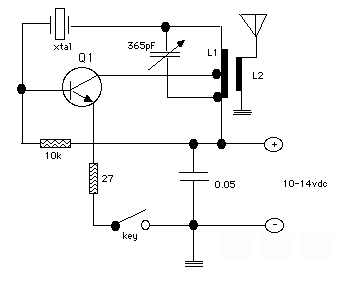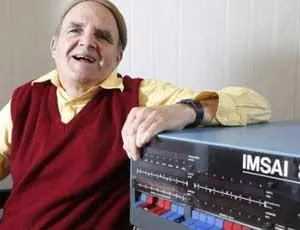And here is a great interview with Element14:
Podcasting since 2005! Listen to Latest SolderSmoke
Monday, September 18, 2023
Sunday, September 17, 2023
"The Art of Electronics" Post #2 Interview with Lady Ada (Video)
Saturday, September 16, 2023
"The Art of Electronics" by Horowitz and Hill (First in a Series of Blog Posts on this Great Book)
Oh man, this book is so good. You really just need to buy it now. I put it in the Amazon link to the right.
OVER HERE >>>>>>>>>>>>>>>>>>>>>>>>>>>>>>>>>>>
The Imsai guy reminded me of this book, and pointed out that earlier editions are more reasonably priced, so I got the second edition (looks like 1980, reprinted many times through 1988). Dean KK4DAS got one too (I think he also got the second edition).
Lest there be any doubt that this book is for us, first let me point to the pictures of Paul Horowitz and Winfield Hill. https://artofelectronics.net/about/
Friday, September 15, 2023
HB2HB -- A Contact with Denny VU2DGR (video)
At first I didn't realize it was Denny. On September 11, 2023 at about 2330Z I had walked back into the shack after dinner. I think DX spots showed an Indian station on 20 meter SSB. Without realizing who it was, I tuned him in on my Mythbuster rig, heard the other station sign off, and quickly threw in my call. Denny came back to me right away, and I think both of us then realized that we recognized the call of the other station. Wow, it was Denny, VU2DGR, the Wizard of Kerala! At the time of the QSO, I didn't have my phone with me; after we spoke, I went to get it, so the video above captures part of Denny's subsequent contact. (You can also at one point hear Guapo barking.)
Denny has been running a wonderful station that combines SDR gear with and HDR tube type amplifier and a homebrew Moxon.
Here is Denny's station. The transceiver is a RadioBerry. the amplifier and power supply are on the other table.
Thursday, September 14, 2023
Building Nixie Tubes for a Hiroshima Project
Tuesday, September 12, 2023
BEZOS BUCKS ARE BACK!
With the help of several loyal SolderSmoke listeners, we finally cracked the code and figured out how to put the new Amazon Ads on the blog. You can see it on the right side of this page.
Right over here >>>>>>>>>>>>>>>>>>>>>>>>>
You don't have to buy whatever we are advertising. Just click on the SHOP NOW sign and begin your Amazon shopping there. In this way SolderSmoke will get a small commission on any purchase you make (within 24 hours of your initial click on the SHOP NOW icon).
Friday, September 8, 2023
Why Building for 10 Meters is Harder than Building for Lower Frequencies
Recently my trusty CCI EB63A .1kW amplifier has been in rebellion. On 10 meters, it now often insists on being an oscillator. It calms down nicely on 20 meters. But on 10, it has been a rebellious beast.
Why is this? Why would an amplifier that is well behaved and stable on 20 meters behave so badly on 10 meters?
I used LTSpice to explore the problem.
I looked at two ordinary wires. I gave them each a value of .003 uH. Very low. Then I joined them together in a transformer. I put a 1 volt signal into the primary and looked (in LTSpice) at how much of a signal appeared in the secondary. First, the result on 14 MHz. About 250 mV appears on the secondary.
Monday, September 4, 2023
SolderSmoke Podcast #248 -- Back from the Summer -- Spurs and Filters, S-meters, 6BA6 mania, Shirtpocket rigs, MAILBAG
SolderSmoke Podcast #248 is available for download:
Audio: http://soldersmoke.com/soldersmoke248.mp3
Travelogue: Trip to the Dominican Republic 3-9 August. Thinking about the M0NTV video on mixers...
Solder Smoke Shack South is almost done. I am thinking about workbenches, operating tables and antennas. How high should an electronics workbench be? Table height? Or workbench (woodwork) height?
My son and I went to see "Oppenheimer" Trinity test scene very cool. They wanted to see if the gadget would work!
Is the SolderSmoke blog completely archived on the WayBack Machine? Please check and let me know. Thanks.
Bill's Bench:
-- I've been working a lot of DX with the homebrew rigs: Indonesia, Australia, Japan, Hawaii. Lots of fun. 15 meters has been especially good. But the rigs still need work:
-- M0NTV's video got me to put TinySA to work. I found that output from dual banders could be improved. Spurs and harmonics. Yuck. I need more TinySA -- ordered the TinySA Ultra.
-- Allison KB1GMX helped a lot. EB63A amp was unstable, especially on 10 meters. Higher frequencies are harder! Tightened up shielding, negative feedback, and bypassing. This all helped, but I found that I needed to take the higher frequency LP filters out of the amplifier box. W3NQN filters are better, with steeper skirts and better 2nd harmonic rejections. NanoVNA proving very useful. https://www.gqrp.com/Datasheet_W3NQN.pdf
-- Also worked on the Bandpass filters for these rigs. Farhan's comments on skirts of different filter configurations. Some are "LSB" filters (with steeper skirt at the highest freq) and some are "USB" filters (with the steeper skirt at the lower frequency) See diagrams on the blog page. So I built USB new filters for 12 meters and for 10 meters.
-- Phase Noise rears its ugly head again. See blog posts.
----------------------
SHAMELESS COMMERCE DIVISION:
Mostly DIY RF getting ready to release PsssT kits. Target date: December 18, 2023 (E Howard Armstrong's birthday). https://mostlydiyrf.com/
Amazon Search box seems to have died. I can't get it back. Can anyone tell me what happened? (There seems to be "explanations" from Amazon about this, but they are written in a strange language that I cannot follow.) Something similar happened with the Google Ads on this blog page. Apparently you can't have ads both on YouTube and blogger.
But hey, there is Patreon for those who want to support the podcast and blog.
-------------------------
Pete's Bench
An S-meter for Bill?
6BA6 Mania!
QRP SSB with 6BA6
Shirtpocket rig re-build
Mailbag:
Walter KA4KXX has a great article about homebrewing in the September 2023 QCWA Journal.
Steve KC1QAY -- Has joined the CBLA. I sent him a 3579 crystal. He built a MMM and experienced JOO. And Allison KB1GMX is in his local radio club. TRGHS.
Ajay VU2TGG in Pune, India -- launching a high school receiver effort.
Denny VU2DGR The Wizard of Kerala: https://soldersmoke.blogspot.
Joe VK4BYER working with kids a remote Australian community. FB.
Todd K7ZF -- Wants to get into homebrewing. Advised him to start small.
Dean KK4DAS: Fixing Hallicrafters Worldwide RX. Ciudad Trujillo! Got question from Mark in the VWS Makers Group: HOW DOES Michigan Mighty Mite REALLY Work. See blog.
Trevor Woods -- Info on Super Islander Mark IV made in Cuba from old CFL bulbs. FB.
Bob KD4EBM sent me some great stuff: Sony SW receiver, QCX Mini. Made a CW contact with the QCX. Felt virtuous -- it is going to the DR. Thanks Bob.
Peter KD2OMV: One of the guys I worked with the ET-2 transceiver. Great to hear from him.
Armand WA1UQO Richmond area radio museum? https://www.youtube.com/watch?
Mike WN2A -- Sent me a great care package with lots of toroids. A lifetime supply! Thanks Mike!
Nate KA1MUQ got his Doug DeMaw receiver going after 38 years! FB. Been there, done that!
Tony: G4WIF Liked Valveman video about Gerald Wells. He visited him! https://soldersmoke.blogspot.
Dean KL7MA Bill talked to him on 15 SSB. He had worked Wes W7ZOI! FB!
Monday, August 28, 2023
But How Does the Michigan Mighty Mite REALLY Work?
Dean KK4DAS and I were talking to Mark, a new homebrewer. After we sang the praises of the Michigan Mighty Mite, Mark asked us a good question: How does it really work?
I guess the starting point for analysis is the Barkhausen criteria (that Pete N6QW taught us): essentially you need enough feedback to overcome losses in the circuit, and this feedback has to be in phase with the signal at the input. The MMM is clearly oscillating, so the question becomes, "How does this very simple circuit meet the Barkhausen criteria?"
Here goes:
Friday, August 25, 2023
Wednesday, August 23, 2023
Homebrew Transistors
Sunday, August 20, 2023
15 Meter Homebrew SSB Rig As Heard in Mexico City
19 August 2023. Ralph XE1RK recorded part of our QSO and played it back to me. Thanks Ralph!
I was running about 75 watts to a hex beam aimed Southwest.






























.jpg)









